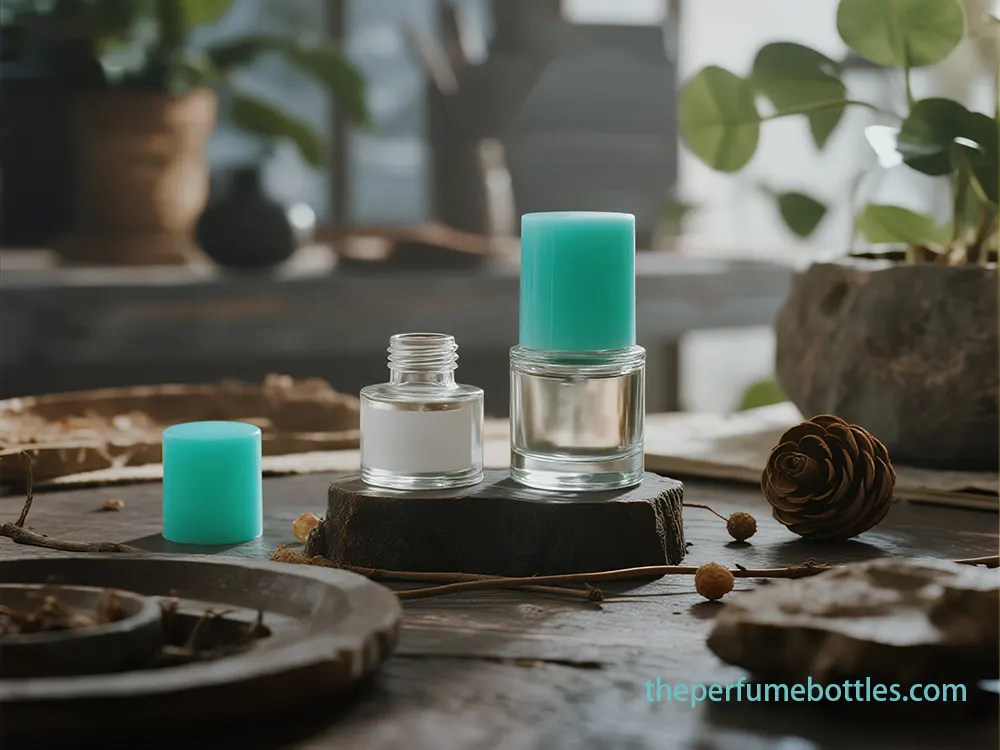
: Explore options, but vet carefully and understand MOQs.
विषयवस्तु की तालिका
परिचय
Stated Capabilities कॉस्मेटिक पैकेजिंग सप्लायर : Verify essential business registrations and industry certifications (ISO 9001, GMP, ISO 15378).

निःशुल्क नमूने प्राप्त करें
: Conduct preliminary checks using resources like Dun & Bradstreet or financial documents. Assess reliability using Operational Risk Management Science (ORMS).
Scalability
: Assess capacity to meet projected volume growth.
- Minimum Order Quantities (MOQs): Confirm compatibility with your plans.
- Sustainability Claims: Conduct initial checks and look for certifications.
- Regulatory Compliance: Verify understanding and adherence to regulations in target markets (EU, US FDA).
- Supply Chain Risk: Assess their supply chain structure and potential risks.
- Consider backup suppliers. AI tools can automate identification and initial vetting.3. Examining Supplier Capabilities, Quality, and Compliance
- Conduct comprehensive analysis of shortlisted vendors, focusing on manufacturing, quality control, regulatory adherence, sustainability, and functional integrity.3.1 Manufacturing Capacity and Technology.
Review production ability for present and projected quantities. Analyze innovation and equipment for efficiency and advancement. Site visits are highly suggested to observe operations and fulfill workers. Examine technical experience and advancement ability.

निःशुल्क नमूने प्राप्त करें
Evaluate the provider’s top quality management system and certifications (ISO 9001). Assess:
Adherence to Specifications
: How they ensure packaging meets detailed specs.
- Consistency and Reliability: Processes for batch-to-batch consistency.
- Inspection: निर्माण के दौरान और लेनदेन से पहले प्रक्रियाएं।
- शिकायत निवारण: शिकायतों, वापसी और सुधारात्मक कार्रवाई का निरीक्षण।
- गुणवत्ता नियंत्रण चेकलिस्ट: विस्तारित चेकलिस्ट का उपयोग।
- स्याम्पल पुष्टि: पूर्व-उत्पादन स्याम्पल और उत्पादन निगरानी की प्रक्रिया।
बैच टेस्टिंग
- : निरंतर गुणवत्ता के लिए नियमित टेस्टिंग।3.3 कॉस्मेटिक उद्योग नियम और मानकों का पालन
- प्रमाणिकरणयूरोपीय संघ अनुपालन
- : नियम 1223/2009 (लेबलिंग, सामग्री, बुद्धिमत्ता, नैनो सामग्री) का समझ, माइक्रोबायोलॉजिकल एकीकरण, PIF/CPNP जागरूकता, GMP अनुपालन।अमेरिकी अनुपालन
- : FD&C एक्ट और FDA दिशानिर्देशों (लेबलिंग, सामग्री, सुरक्षा) का समझ, कॉस्मेटिक लेबलिंग गाइड, सुरक्षित कॉस्मेटिक एक्ट जागरूकता, VCRP, आवश्यक चेतावनियां।सामान्य अनुपालन
- : ISO 22715 का अनुपालन, बदलते नियमों के अनुभव, पैकेजिंग सुरक्षा आकलन, उत्परिवर्तित सामग्री की परीक्षण (विशेष रूप से पुन: प्रयोग किए गए सामग्री के लिए), प्रतिरक्षित तत्वों का विश्लेषण (BPA, PFAS), पुन: प्रयोग किए गए प्लास्टिक नियमों के अनुपालन (EU 2022/1616), PPWR का समझ, नैतिक स्रोत, दायित्व बीमा।नियामक विशेषज्ञों की सलाह लेकर लेबल के अनुपालन को सुनिश्चित करें और सूचित रहें।
- 3.4 स्थायित्व दावों और प्रमाणिकरण की पुष्टिप्रमाणिकरण के बाहर स्थायित्व दावों की पुष्टि करें।
- तीसरी पार्टी प्रमाणिकरण: विशिष्ट गुणों के लिए प्रमाणिकरण (APR, FSC, BPI, ISO 14001, Cradle to Cradle) का उपयोग एक शुरुआती बिंदु के रूप में।
- जीवन-चक्र आकलन (LCAs): LCAs के लिए डाटा योगदान के बारे में पूछें।
सामग्री पुष्टि
: पुन: प्रयोग किए गए सामग्री की प्रतिशत की पुष्टि, ईको-दावों की पुष्टि, पुन: प्रयोग किए गए सामग्री के परीक्षण (प्रदर्शन, गुणों, सुरक्षा, NIAS) का आकलन, प्रतिरक्षित तत्वों का विश्लेषण करें।
प्रक्रिया पुष्टि
: ऊर्जा कुशलता, कचरा कम करने, पानी का उपयोग और नैतिक स्रोत का आकलन।
स्थायित्व के लिए डिज़ाइन
: निर्माण के लिए डिज़ाइन और एकल सामग्री के समर्थन का आकलन।
Holistic Approach
- : Look for suppliers considering material circularity, optimization, and refill/reuse support.Transparency
- : Assess willingness to be transparent about sourcing and manufacturing.Sustainable Material Usage KPIs
- : Track percentage of sustainably sourced materials.3.5 Overall Operational Reliability
- Assess track record for on-time delivery, handling urgent orders, and responsiveness. Evaluate contingency plans and backup resources. References from existing clients are valuable for reliability and financial health assessment.4. Assessing Cost Structure and Financial Viability
- Evaluate cost structure and financial viability thoroughly. Lowest unit price isn’t always the lowest total cost or most secure supply chain.4.1 Assessing Cost Structure and Financial Viability
- Understand pricing models and request transparent breakdowns. Consider:Competitiveness
- : Benchmark pricing against others and industry standards.: Clear breakdown of costs (materials, manufacturing, tooling).
Payment Terms
: Evaluate and negotiate terms.
- Volume Discounts: Understand tiered pricing.
- Total Cost of Ownership (TCO): Calculate TCO including acquisition (materials, tooling) and operational costs (labor, energy), plus “hidden costs” (warehousing, damaged/obsolete inventory). Early manufacturer involvement can optimize TCO.
- Manufacturing Cost Factors: Understand how complexity, quantity, process, and volume influence costs.
Profit Margins
: Consider your own target margins when evaluating supplier costs.
Present realistic pricing and margin strategy. Benchmarking can strengthen negotiation.
- 4.2 Assessing Financial Viability.Examine financial health and wellness to alleviate disruption risk.
- Financial Statement Review: Analyze annual report, revenue statement, and cash flow declaration.
- Key Financial Indicators: Review cash, assets, debt, responsibilities, total assets (Balance Sheet); earnings, earnings, margin (Income Statement); capital from operations/capex (Cash Flow).
- Financial Ratios: Calculate debt-to-equity and assess leverage/risk.
- Liquidity: Evaluate capacity to satisfy short-term commitments.
- Trend Analysis: Monitor performance over time for deteriorating conditions.
- Information Sources: Use credit rating agencies (Dun & Bradstreet) and client references.
- Red Flags and Risk Mitigation: Address signs of instability, request more info, understand mitigation strategies. Develop contingency plans (alternate vendors). Include financial performance/exit clauses in SLAs. Increase monitoring for concerns. Assume potential strain and review SLAs regularly.
Financial Stability Rating
: Implement an internal rating system (Confident, Satisfactory, Needs Monitoring) to categorize vendors and determine review frequency (annual minimum).

निःशुल्क नमूने प्राप्त करें
5. Evaluating Service Offerings and Partnership Potential
Assess service level and potential as a long-term partner for innovation, efficiency, and supply chain resilience.
5.1 Evaluating Service Offerings
Assess value-added services:
- Evaluate capabilities in industrial design, prototyping (3D printing), graphic design, engineering, production support, 3D modeling, specification/label/carton/pallet design, mold/tool development, filling line compatibility.Technical Expertise
- Information SourcesInventory Management
- : Evaluate ability to manage inventory, offer warehousing or JIT delivery.Logistics
- : Assess capabilities in shipping, urgent orders, and transportation efficiency.After-Sales Service
- : Understand support structure after delivery.Integrated services (formulation, filling, packing) can streamline the supply chain.
- 5.2 Evaluating Partnership PotentialView suppliers as potential long-term partners. Evaluate:
- Communication and Responsiveness: Assess ease of communication and proactive updates.
Relationship Building
: Prioritize suppliers valuing long-term relationships for cost-effectiveness and predictable projections.
Collaborative Innovation
- : Evaluate willingness to collaborate on new products, packaging, and process improvements.Alignment with Brand Vision
- : Ensure understanding and alignment with brand values and growth.Transparency and Trust
- : Assess transparency in processes, sourcing, and issues.Supplier Development
- : Consider nurturing relationships to improve capabilities and quality.5.3 Key Performance Indicators (KPIs) for SRM
- Use KPIs for ongoing management and defining expectations. Relevant KPIs:: Defect rates, consistency, adherence, quality rating.
- Delivery: On-time rate, lead times, order accuracy.
- Cost: Competitiveness, cost reduction, TCO.
- Service: Responsiveness, communication, after-sales support.
Innovation
: Contribution to new designs/materials/processes.
Sustainability
: Rating, recyclability, waste reduction, carbon footprint, sustainable material usage.
Risk
- ये तत्व एक साधारण बोतल को कला में बदल देते हैं, दृश्यात्मक प्रभाव और शारीरिक अनुभव को बढ़ाते हैं। Regularly assess suppliers using scorecards. Conduct Quarterly Business Reviews (QBRs) and Joint Business Plans (JBPs).
- Leverage digital tools for data centralization and SRM.6. Supplier Selection, Contracting, and Onboarding
- Final steps: selection, contract negotiation, and onboarding.6.1 Supplier Selection
- Make objective, data-driven decisions using evaluation findings.Decision Frameworks
- : Use structured methods like weighted scoring models or scorecards. Supplier selection is a Multi-Criteria Decision-Making (MCDM) problem; AHP can create formal models.Weighted Scoring Model
: Develop a matrix with weighted criteria (quality, cost, delivery, service, compliance, sustainability, financial stability). Assign weights based on priorities.
Evaluation and Scoring
: Score suppliers against criteria and aggregate weighted scores.
- Stakeholder Involvement: Include relevant teams (procurement, R&D, QA, marketing, finance, operations) in scoring system development and evaluation. Use multi-assessor matrices.
- : Ensure the process is transparent and based on abilities.Risk Assessment Integration
- : Incorporate risk findings into the scoring model.Final Decision
- : Make the decision based on scores and qualitative assessments to reduce purchase risk and maximize value.Consider testing vendors with short-term contracts if doubts remain.
- 6.2 Contracting.Negotiate a thorough contract to define the connection and mitigate threats. Key conditions:.
- Extent of Work: Define elements, materials, requirements, volumes.
High Quality Agreement
: Detail criteria, assessment, approval, managing non-conformance, charges.
- गुणवत्ता: Formalize pricing, timetables, money, price adjustments.
- Distribution and Lead Times: Specify preparations, routines, delivery, delay penalties.
- Copyright (IP): Address ownership/usage of designs/tooling. Consist of discretion.
- सेवा: प्रतिक्रियाशीलता, संचार, बाद की समर्थन.
- आविष्कार: नए डिजाइन/सामग्री/प्रक्रियाओं के योगदान.
- स्थायित्व: रेटिंग, पुनर्चक्रणीयता, कचरा कम करना, कार्बन छाप, स्थायी सामग्री का उपयोग.
- जोखिम: लचीलेपन, आश्वासनीयता.
दौरान आपूर्तिकर्ताओं का आकलन करें। चौकटीय व्यापारिक जांच (QBRs) और संयुक्त व्यापारिक योजनाएं (JBPs) करें.
डिजिटल उपकरणों का उपयोग कर डाटा केंद्रीकरण और SRM करें.

निःशुल्क नमूने प्राप्त करें
6. आपूर्तिकर्ता चयन, कंत्राक्तन और ऑनबोर्डिंग
अंतिम चरण: चयन, कंत्राक्तन बहस और ऑनबोर्डिंग.
6.1 आपूर्तिकर्ता चयन
आकलन फाइन्डिंग का उपयोग कर विशिष्ट, डाटा-आधारित निर्णय लें.
निर्णय फ्रेमवर्क: वितरित स्कोरिंग मॉडल या स्कोरकार्ड के जैसे संगठित तरीके का उपयोग करें। आपूर्तिकर्ता चयन एक मल्टी-क्रिटरिया डिक्शन मेकिंग (MCDM) समस्या है; AHP औरत्फलीय मॉडल बना सकता है.
वितरित स्कोरिंग मॉडल: वितरित क्रिटरिया (गुणवत्ता, लागत, डिलीवरी, सेवा, अनुपालन, स्थायित्व, आर्थिक स्थिरता) के साथ एक मैट्रिक्स बनाएं। प्राथमिकताओं के आधार पर वजन दें.
आकलन और स्कोरिंग: क्रिटरिया के आधार पर आपूर्तिकर्ताओं को स्कोर करें और वितरित स्कोरों को जुड़ाएं.
हितधारक सहभागिता: विशिष्ट टीमों (प्राइसिप्री, R&D, QA, मार्केटिंग, वित्त, परिचालन) को स्कोरिंग प्रणाली के विकास और आकलन में शामिल करें। बहु-मूव्यासी मैट्रिक्स का उपयोग करें.
Information Sources: प्रक्रिया को पारदर्शी और क्षमताओं के आधार पर रखें.
जोखिम आकलन एकीकरण: जोखिम फाइन्डिंग को स्कोरिंग मॉडल में शामिल करें.
अंतिम निर्णय: स्कोर और गुणात्मक आकलन के आधार पर निर्णय लें ताकि खरीदने के जोखिम को कम करें और मूल्य को अधिकतम करें.
संदेह बने हों तो लघु-समय के कंत्राक्तन से वेंडर्स को परीक्षण करें.
6.2 कंत्राक्तन.
एक विस्तृत कंत्राक्तन बहस करें ताकि संबंध को परिभाषित करें और खतरों को कम करें। मुख्य शर्तें:.
- कार्य का पैमाना: तत्वों, सामग्रियों, आवश्यकताओं, मात्राओं को परिभाषित करें।
- उच्च गुणस्तर समझौता: आचरणों के मानकों, मूल्यांकन, मंजूरी, गैर-अनुसुचितताओं का प्रबंधन, शुल्क को विवरण दें।
- दरें और भुगतान शर्तें: कीमतों, समयसारणियों, पैसे, कीमतों के आदानप्रदान को प्रामाणिक बनाएं।
- वितरण और लेड टाइम्स: तैयारी, रूटीन, डिलिवरी, देरी के दंड को विवरण दें।
- कॉपीराइट (आईपी): डिजाइन/टूलिंग के स्वामित्व/उपयोग को संबोधित करें। छुपावट को समाहित करें।
- निर्धारण और आर्थिक सम्मानन: जिम्मेदारियों और दायित्वों को परिभाषित करें। आर्थिक बीमा कवरेज को सुनिश्चित करें।
- दबाव असंभावना: अप्रत्यक्ष स्थितियों के लिए प्रामाणिक प्रावधान।
- उत्पादन रोकथाम शर्तें: शर्तों, चेतावनी की अवधि, जिम्मेदारियों को परिभाषित करें।
- जोखिम प्रबंधन: आश्वासन तैयारी और विघ्न रणनीति को शामिल करें।
- निर्द्वंद्वी धाराएँ: प्रदायक यदि सह-पैकिंग प्रदान करता है, तो ध्यान करें।
- उत्तरदायित्व मापदंड (KPIs): अपेक्षित उत्तरदायित्व आवश्यकताओं का संदर्भ दें।
वैधानिक परीक्षण महत्वपूर्ण है।
6.3 समाहरण
एक मजबूत, व्यवस्थित समाहरण प्रक्रिया लागू करें ताकि सफल समाहरण और मजबूत काम के संबंध के लिए।
- स्पष्ट अपेक्षाओं की स्थापना: आवश्यकताओं, प्रदर्शन मानकों, अनुपालन, संचार और सहकार्य की अपेक्षाओं को परिभाषित करें।
- सम्पूर्ण डाटा संग्रहण और प्रमाणीकरण: वितरणकर्ता के विवरण (संपर्क, बैंकिंग, कर, अनुपालन) का संग्रहण और प्रमाणीकरण करें। डाटा प्राप्ति को आटोमेटिक करें।
- प्रामाणिक प्रक्रियाएँ: एक व्यवस्थित प्रक्रिया का पालन करें जिसमें स्पष्ट भूमिकाएँ और आवश्यक दस्तावेज़/स्वीकारात्मक लिस्ट हो।
- अनुपालन और प्रमाणीकरण पुष्टि: नियमन, नैतिकता और उद्योग मानकों का अनुपालन की पुष्टि करें (रजिस्ट्री, कर आईडी, ISO/GMP, स्थायित्व, जोखिम स्कोरिंग)। पूर्व-योग्यता की चरणों का उपयोग करें।
- प्रणाली समाहरण: वितरणकर्ता को आंतरिक प्रणालियों (ERP, खरीदारी, भुगतान) में समाहित करें। मास्टर डाटा जमा करें, EDI को सक्षम करें, कोड अधिकारें दें, कार्यशीलता को परीक्षण करें।
- वितरणकर्ता सक्षमन: रजिस्ट्री, जानकारी प्रविष्टि, संचार और लेनदेन के लिए एक स्व-सेवा पोर्टल को विचार करें।
- विचार-विमर्श: समाहरण के दौरान एक विश्वसनीय, केंद्रीकृत संचार को बनाए रखें।
- टीम द्वारा सहकार्य: खरीद, वित्त, यान्त्रिकी आदि के बीच नियमित सहकार्य सुनिश्चित करें।
- प्रगति ट्रैकिंग: प्रगति ट्रैक करें ताकि देरी या अपूर्ण कार्य को पहचाना जा सके। डैशबोर्ड का उपयोग करें।
- जोखिम कम करना: ऑनबोर्डिंग का उपयोग करके जोखिम कम करें ताकि चेक के पूरा करने और आवश्यकता संबंधी योजनाओं की पुष्टि करें। एक सूचीबद्ध प्रक्रिया गलतफहमी को रोकती है।
- सप्लायर नोटिफिकेशन: पूरा होने और प्राधिकारिता के बाद सप्लायर को तुरंत संदेश दें।
ऑनबोर्डिंग का आटोमेशन लागत और समय को कम करता है। सामान्य चुनौतियां मैन्युअल डाटा, मानकीकरण की कमी, देरी, खराब दृष्टि और नियमावली अंतर हैं। अद्यतन वेंडर डेटाबेस रखना मददगार है।
प्रभावी ऑनबोर्डिंग एक मजबूत, सहकार्य, नियमावली संबंध बनाता है, जो चेस्टिक पैकेजिंग सप्लायर श्रृंखला को नवांजना करने और रणनीतिक लक्ष्यों को प्राप्त करने के लिए आवश्यक है।
कमेंट्स
प्रोडक्ट केटेगरीज
हॉट सेल बोतलें

Case Study: Creating Custom 5ml Glass Roller Bottles for a Greek Beauty Brand
Vesseluxe partnered with a Greek beauty brand to craft precise 5ml glass roller bottles, solving accuracy and

केस स्टडी: कस्टम पेर्फ्यूम बोतल वितरण के लिए एक इतालवी ब्रांड
कस्टम लक्जरी पेर्फ्यूम बोतल वितरण के लिए इतालवी ब्रांड - प्रेसिशन मोल्ड डिजाइन, निर्विकल्प फिनिश

Work closely with suppliers who are investing in new permanent materials and advanced technologies such as advanced recycling, plant-based plastic and blockchain for tracking.
The Asia-Pacific (APAC) region is quickly becoming a leader in using Earth-friendly packaging. This is happening because more customers want environmentally friendly products, governments are making difficult rules, and people are more aware of plastic pollution. Important efforts include countries like India, South Korea and Australia, which make EPR policies mandatory. In addition, there are more “plastic pacts” and voluntary promises from companies to work together to cut plastic waste and improve recycling.


केस स्टडी: कस्टम एम्बर ड्रोपर बोतलें फॉर एक यूके क्लायंट
हमारे स्वयंचलित ऐम्बर ड्रोपर बोतलों के मामले का अध्ययन करें एक ब्रिटेन के क्लायंट के लिए—बीटीबी बुल्क आर्डर्स और प्रीमियम कॉस्मेटिक या इस्तेमाल तेल के पैकेजिंग के लिए बिलकुल अच्छा।
- +86 186 5178 1159
- [email protected]
- मं-सोन 07:00-21:00
टैग्स

Case Study: Custom Engraved Perfume Bottles for Swiss Clients
custom engraved perfume bottles crafted with precision—consistent depth, sharp detail, and flawless

Eye Serums:
Allow direct application without spreading bacteria, popular for ease of use and travel.

Specific production lead time from international suppliers, especially in China, usually ranges from 15 to 35 days after sample approval, except for international shipping time. The sample time is short, usually 2 to 10 days. This is rapidly contradictory with domestic suppliers such as SKS Bottle & Packaging (USA), which orders for a business day, or Ampulla (UK). Foreign suppliers vs. rapid turnarounds and reduced inventory holding costs from local providers.
To reduce supply chain risks, including potential reduction and quality anomalies, startups should cultivate relationships with many suppliers. Diversification for both essential oils and packaging components enhances operating flexibility.

Case Study: Customized Bottle of Essential Oil for California Clients
Discover how Vesseluxe created custom bottle of essential oil balancing UV protection and elegance




